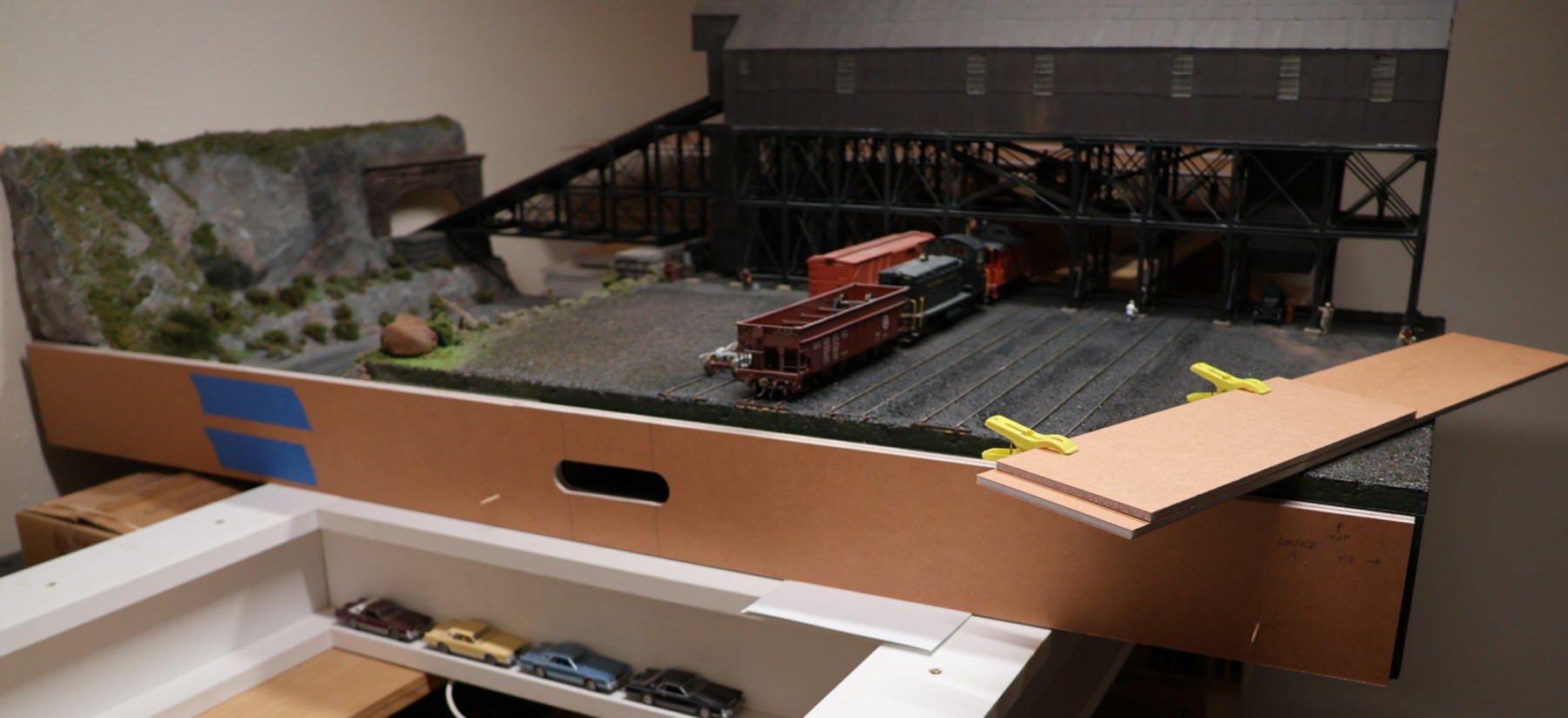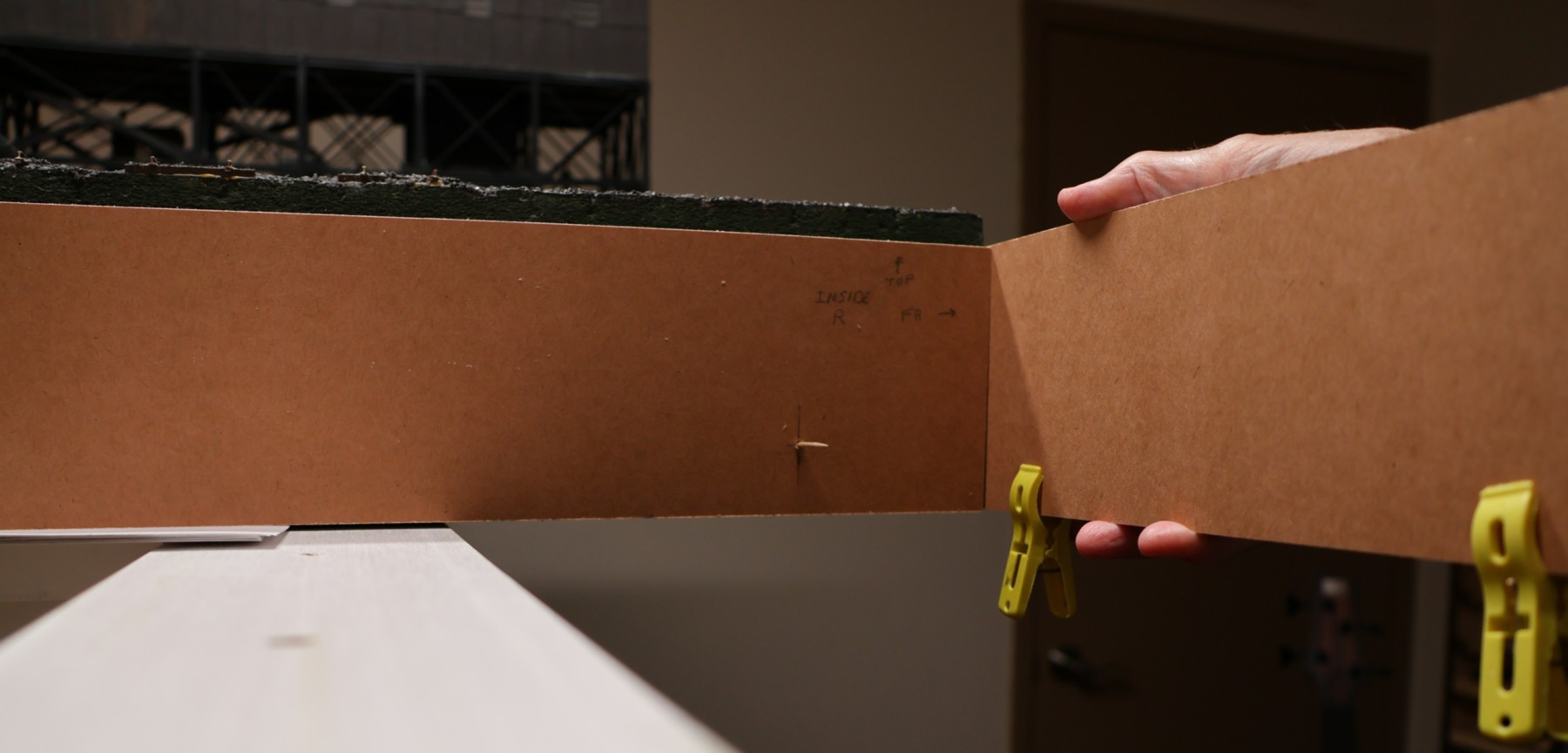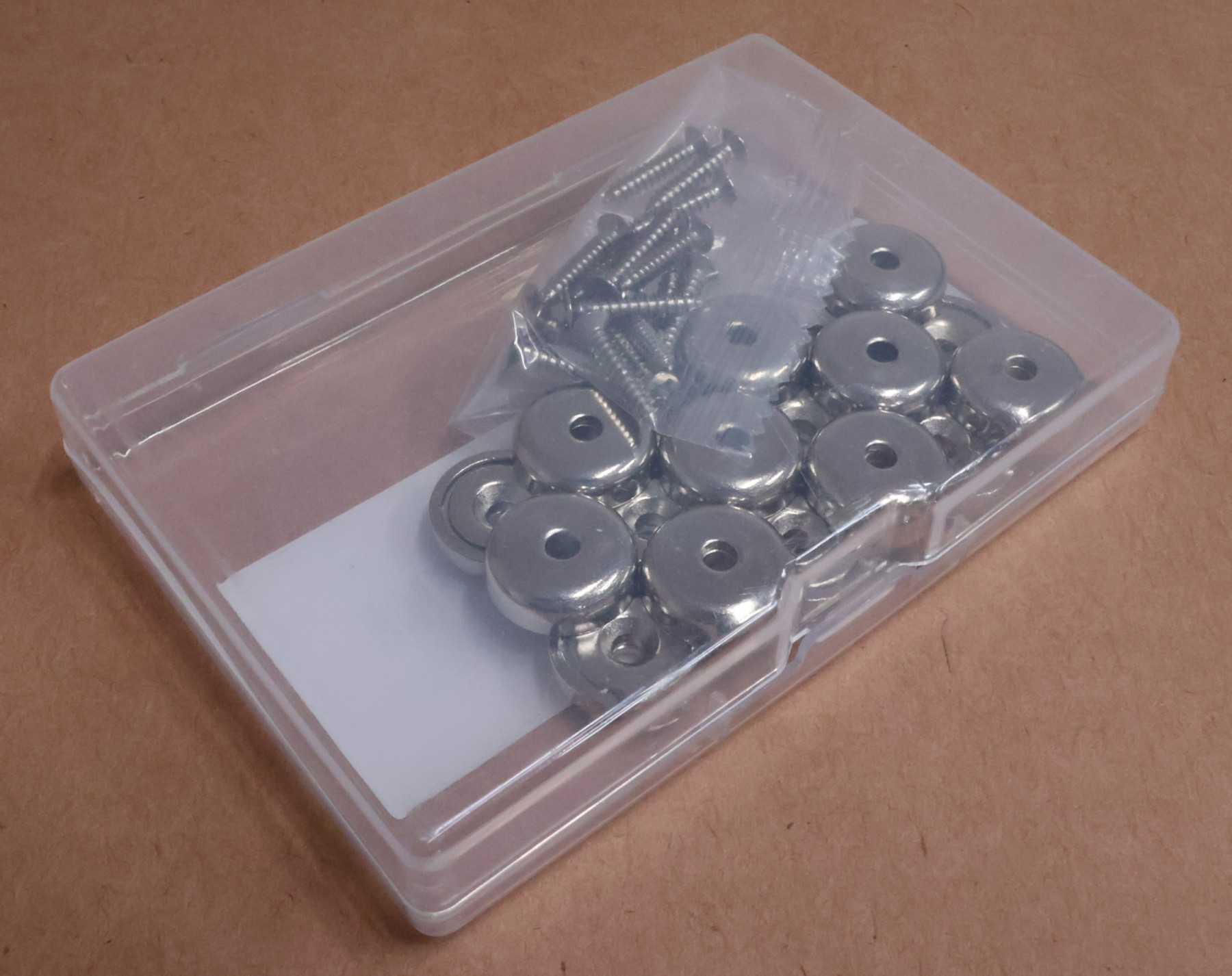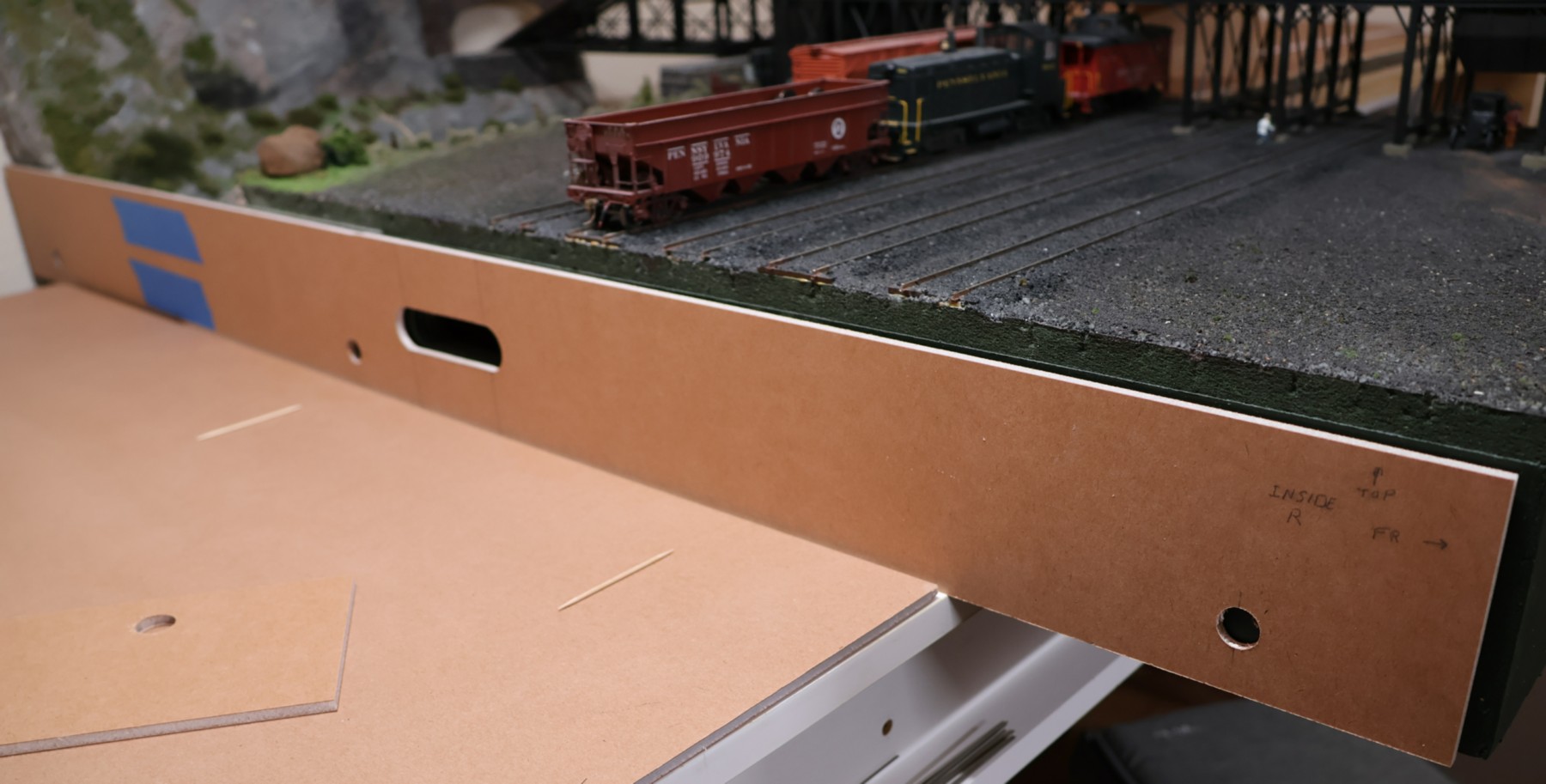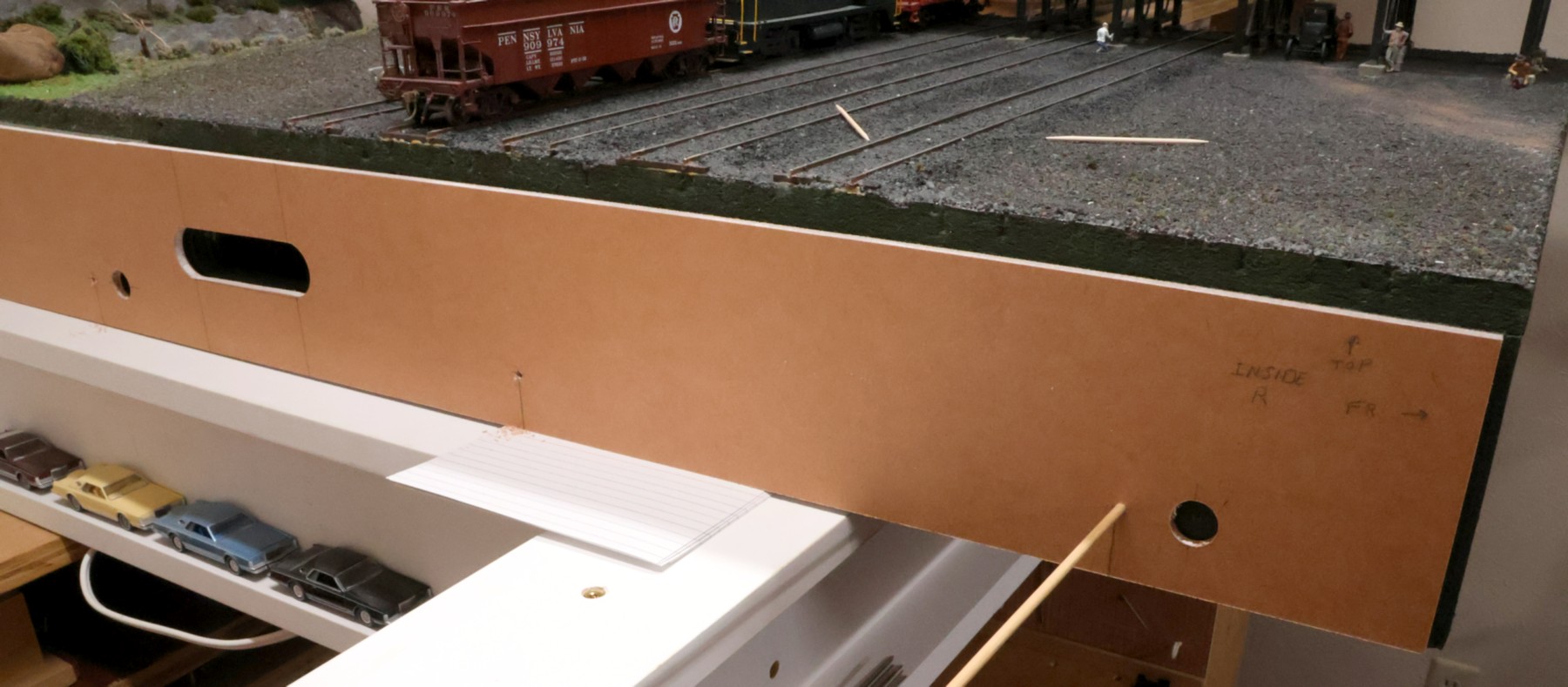The actual construction of the second module will follow the general flow of how I built the first module. So, I will not document each and every detailed step, here, as they will largely be the same. What I want to document on this page are those things that are different from the first module's steps. So, the first photo shows the two sides having been constructed and the module's grab handle cut out of them. The blue tape is there to hold the 36" and 12" pieces together, even though they have been glued together. Since that is an end-joint glue-up, it is very weak, so while I am manipulating each of the side panels, the tape makes sure that there will be no damage. In this photo I am in the process of making three holes in the side panels, into which the magnets will be installed later on.
(external link: First Module's Construction)
I carefully lined up the side panels such that they match up with the first module's side panel. Since the side panels are offset by the thickness of the Gatorfoam board, I held a temporary "front" panel in position while I drilled the pilot holes for the three magnets' holes. I put toothpicks into the pilot holes while I set up the shot for these photos. I drilled holes in both side panels at the same time (simply flip one of them around), so that both the left and right side panels have the holes in the same location. This is not critical, but it made quick work of it. What is critical, however, is that the right-hand side panel lines up with the first module's left side panel perfectly, especially the very visible front edge.
I bought these magnets from Amazon. They are very powerful, so three of them across a 48" span should be sufficient. The key feature that I like about them is that they have a countersunk hole in their center, so they can be screwed to a block of wood. In the past I have tried supergluing or using 5-minute epoxy to glue a magnet to a surface and the bond just doesn't last with these types of rare-earth magnets. While the Amazon photo shows that these attract to each other, the actual reality is that only one side of the magnet attracts (the other repels), and so you would have to mount the opposing magnet with the mounting screw out of the module to make the magnets work with each other. So, instead, I tested it with a metal washer and it works perfectly. A metal washer has a center mounting hole, so I can use one that is approximately the same outer diameter and mount that to the other module's side panels. As a side note, these magnets are intended to be mounted somewhere and have something with metal hang off of them. For example, I took a number of these and screwed them to a section of plywood, so that I could hang my chisels to the plywood board and have easy access to them.
(external link: Magnets)
The magnets have an outer diameter of 16mm, which is a perfect fit for a 5/8" Forstner bit, so I used the pilot holes to guide the Forstner bit in the drill press to drill the holes. The holes are 3 inches away from the front and back edges, and 1 inch away from the bottom edge. The center hole is drilled at 25 inches from the front. The latter is to make sure to stay away from the grab handles, yet be close to that area just in case I need to use some force to pull the modules apart. The position from the bottom is to make sure to stay away from the creek bottom. These particular magnets are exactly 3/16" thick. The Gatorfoam board is 12.5/64", so just a hair thicker than the magnet, making the magnet fit just about perfectly.
Again, at one inch from the bottom of the module, I drilled a pilot hole, later enlarged with a 1/8" drill bit, to make the holes for the 1/8" dowel rod I am using as alignment pins. The magnets will act as clamps while the alignment pins will hold the modules in the correct relative position to each other. Drilling the alignment pins is probably the single-most important step in this construction process, to make sure that they consistently align with the other module and that there is no slop between the two modules. That way the track will later line up perfectly each time the layout is taken apart and rebuilt. This photo shows the first wooden rod inserted in the first drilled hole, that way the drilling of other holes is consistent. The first one is super critical. I put five alignment-pin holes in the side panels of the second module at 4", 14", 26", 34", and 43" from the front edge. The ones near the magnets are close to the magnets so that the magnets get lined up accurately.
After cutting out the creek's profile in the side panels, I glued the four panels together into the exterior box of the module. When the glue cured, I brought it in from the garage (I use my table saw as that has the flattest surface in the house that is large enough to hold this 2' x 4' frame) and put it next to the first module to verify that everything aligns and matches. Note that the module's framing rests on two extra sheets of Gatorfoam, which I have placed on the layout's support I-beams, to keep the cats from climbing up on to my layout.
I am building this module in the garage, but we got a sudden cold spell, so I didn't want it to go through massive temperature swings, so I brought it indoors. The bottom sheets have been glued into place, with blue tape acting as the (initial) clamps and continuing to protect the joints during moves.
(stay tuned; next up is the interior structure)


